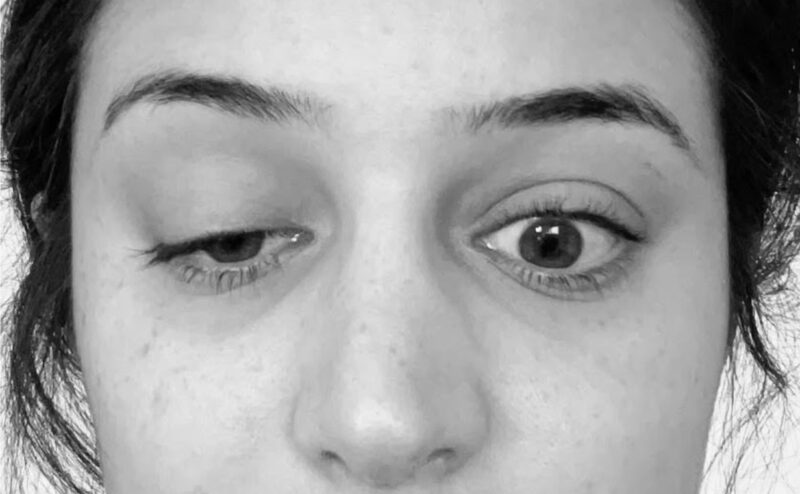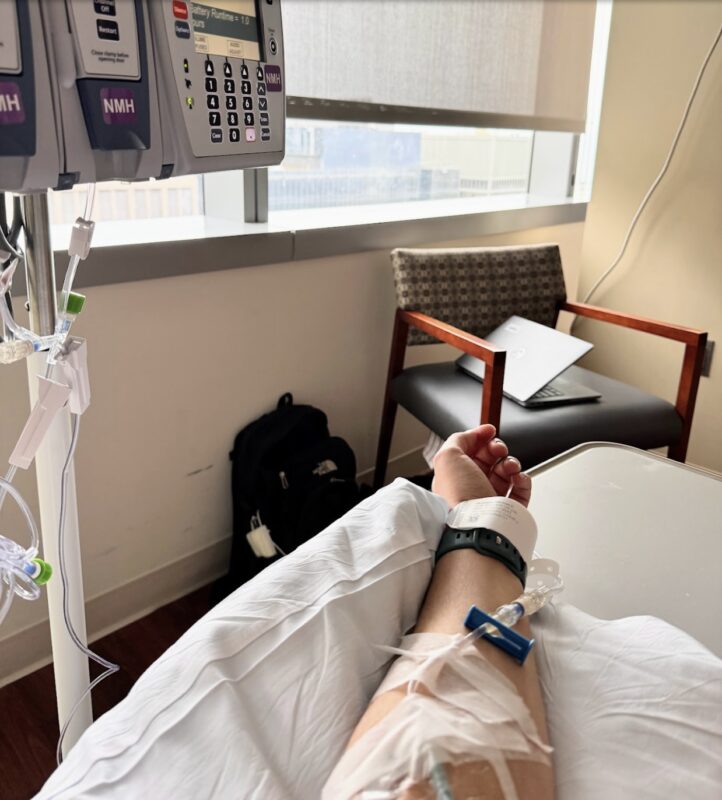Guest Voice: A peek through the eyes of ocular myasthenia gravis
A droopy eyelid and blurry vision were my first symptoms

Marissa Humayun has learned to advocate for herself after her ocular myasthenia gravis diagnosis, and she encourages others to ask for help, too. (Courtesy of Marissa Humayun)
When I was 26 years old, my life as I knew it came to a screeching halt.
It started one evening in March 2023, when I came home from a party and noticed that my eye looked droopy. It was the first symptom of something that turned out to be serious: myasthenia gravis. Who would’ve thought?
When the drooping eyelid turned to blurry vision, and soon after, double vision, I knew something was wrong. It was terrifying. I was a healthy, young girl one day, then completely debilitated by vision changes the next.
My diagnosis wasn’t linear. I first went to the emergency room, thinking I’d had a stroke. After a diagnosis of ptosis, I let my primary care physician know what was going on, and she ordered some tests, all with inconclusive results.
After some pleading, I was finally connected with a neuro-ophthalmologist at Northwestern Memorial Hospital in Chicago. Within the first 10 minutes of me sitting down in her office, she could tell I had ocular myasthenia gravis. I also learned I’m a seronegative patient, making my case exceptionally rare.
I panicked. I wanted an answer to how these symptoms suddenly came about and how disabling they were, but ocular MG? Accepting this news was challenging.

An unexpectedly droopy eyelid was Marissa Humayun’s first symptom of ocular myasthenia gravis. (Courtesy of Marissa Humayun)
My plan of action became taking Mestinon (pyridostigmine bromide) and prednisone, and later, undergoing a thymectomy. Within four months, I went from one droopy eyelid to being on an operating table.
It took me only six weeks to get a formal diagnosis. At the time, it was hard to comprehend how my life had unraveled so quickly. Looking back, I’m grateful for my quick diagnosis and the swift action from doctors. According to Yale Medicine, many MG patients report a diagnosis delay of up to two years.
After my thymectomy, my symptoms stabilized, and I began weaning off the prednisone. It had wrecked my body, making me prediabetic and changing my weight and appearance drastically, all in an attempt to reach some semblance of remission or a normal life. In July 2024, after being off prednisone for only two months, I was inundated with ocular MG symptoms again.
This time around, I was connected with a neurologist who helped me explore a new treatment option, Rituxan (rituximab) infusions. For close to a year now, I have received infusions every six months to control my symptoms and give me my life back.
Being your own advocate
Many times on my journey to diagnosis and treatment, I found myself in the uncomfortable position of speaking out and speaking up for myself. It is hard to ask for help, period. However, those moments of speaking up on your own behalf can make a difference.
My advice to patients, new or existing, is to advocate for yourselves. Ask for the test, ask for help around your house, ask for a break. Your health is your No. 1 priority, and you make it so by advocating for yourself.
Takeaways from my experience
Grieving my old life: I don’t think I’ve properly grieved my old life yet. The life that wasn’t squirreling away Mestinon in every purse and backpack. The one where I didn’t obsessively look in the mirror every time I went to the bathroom, trying to notice if my eyes looked the same. The one where I had the energy to go out for the whole day without having to come home and nap for fear of overexerting myself and making my symptoms worse.

Marissa Humayun received her first Rituxan infusion at Northwestern Memorial Hospital in Chicago, in 2024. (Courtesy of Marissa Humayun)
Today, day-to-day life requires so much planning: prepping medications, thinking of when to rest, planning how to get to and from a place without exerting too much energy, and thinking of who can drive me if leaving the house requires more than 30 minutes of driving.
The fear of generalizing: The situation I’m in as a seronegative ocular MG patient is unique. Every day of my diagnosis has had a little asterisk with it. I have accepted that diagnosis completely; however, the thought of my ocular MG progressing to generalized myasthenia gravis is terrifying. I fear the thought of having to accept once again that life won’t be the same, and not knowing what will happen to my body in the future. I hold my breath and count each day as a lucky one.
I look fine, but I’m really not: I appear fine to others who don’t understand my struggle. Really, only my family and fiancé know. On the outside, other than an occasional droopy eyelid, I look all right. On the inside, when symptomatic, I have struggled with double vision, blurry vision, headaches, and general fatigue. No one can see life through your eyes. If only they could know!
To submit your own Guest Voice for publication on Myasthenia Gravis News, please email your idea to our columns manager at [email protected] with the following included in the subject line: “Guest Voice: Myasthenia Gravis News.”
Note: Myasthenia Gravis News is strictly a news and information website about the disease. It does not provide medical advice, diagnosis, or treatment. This content is not intended to be a substitute for professional medical advice, diagnosis, or treatment. Always seek the advice of your physician or other qualified health provider with any questions you may have regarding a medical condition. Never disregard professional medical advice or delay in seeking it because of something you have read on this website. The opinions expressed in this column are not those of Myasthenia Gravis News or its parent company, Bionews, and are intended to spark discussion about issues pertaining to myasthenia gravis.








Trisha Badovick Tobey
Marissa ~ you are a trailblazer and an inspiration. Thank You for sharing your story. Bravo! ❤️💕
Shelley Hoffman
I pray for you every day and admire you for sharing your story.
Charles Kendig
New information and want to learn more. Time for CHAT GBT to help educate the world about this and to build the library of known accurate information.